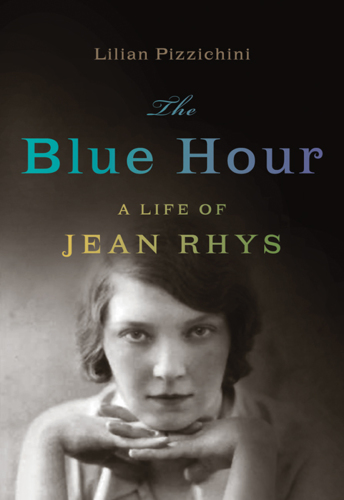
The Blue Hour
A Life of Jean Rhys
کتاب های مرتبط
- اطلاعات
- نقد و بررسی
- دیدگاه کاربران
نقد و بررسی

February 16, 2009
The genius of novelist Jean Rhys (1890–1979) is painfully depicted in this compelling short biography, exploring what it was like to live such a tortured life. Rhys was overlooked for decades until Wide Sargasso Sea
, her postmodern shift of emphasis on Jane Eyre
, became an instant sensation in 1966. Three times married to ne’er-do-wells and enduring an unhappy dollop of motherhood, Rhys was better known as the lover of Ford Maddox Ford. According to British author Pizzichini (Dead Man’s Wages
), both Ford’s “predatory paternalism” and his novelist’s flattery attracted and repelled her, as did the criminal element of society. Pizzichini searches Rhys’s background for clues to her self-destructive judgments. Born in Dominica as Ella Gwendolen Rees Williams, she was later a free-spirited young outsider in starchy, empirical England and elsewhere in Europe. Stuck with men who couldn’t make ends meet, Rhys had a brief career in prostitution and also worked as a chorus girl. Evocative and empathetic, Pizzichini still offers no fully satisfactory explanation for the explosiveness of Rhys’s interior life: “She found life difficult because she found it hard to be herself.” 20 photos.

February 1, 2009
Atmospheric but sloppily written, skimpily researched biography of the British novelist whose depressed, dependent heroines echoed her own neurasthenia.
Born Ella Gwendolen Rees Williams in the West Indian colony of Dominica, Jean Rhys (1890–1979) apparently sustained lifelong damage from her mother's indifference and the terrifying tales of zombies and werewolves related by a nursemaid. She rarely had close female friends after moving to England in 1907, and felt hardly any better about the men who both supported and demeaned her once she quit an uncertain career as a chorus girl and began years of passively living on the chancy largesse of her lovers and three husbands (two shady operators and one failed literary agent). She began chronicling blank, bleak existences like hers in fiction in the mid-'20s, when novelist Ford Madox Ford published her in the Transatlantic Review under the name Jean Rhys. (He also entangled her in a mnageà trois.)"She writes about long periods of nothingness with an insight born of bitter experience," writes British literary journalist Pizzichini (Dead Men's Wages, 2002)."Textual elisions punctuate her words, reflecting her blankness." The biography has a similarly flat affect, noting with no moral judgments Rhys's heavy drinking, fits of rage and seemingly total inability to take care of herself. The productive decade that produced Quartet, After Leaving Mr. Mackenzie and two other novels, equally notable for their stark prose and sordid subject matter, ended in 1939. Rhys would not publish another book until 1966, when Wide Sargasso Sea brought her late-life fame with a fictional reimagining of the mad wife from Jane Eyre. Aiming to write about her subject"on her own terms," Pizzichini essentially relies on Rhys' autobiographical novels and Carole Angier's more thorough Jean Rhys (1990) for factual details, concentrating on limning her precarious emotional states with cringe-inducing empathy.
Pizzichini's indulgent wallowing in her subject's excesses leaves the impression that Rhys was little more than the crazy drunk people often took her for.
(COPYRIGHT (2009) KIRKUS REVIEWS/NIELSEN BUSINESS MEDIA, INC. ALL RIGHTS RESERVED.)

April 15, 2009
In this biography of author Jean Rhys (best known for her 1966 novel, "Wide Sargasso Sea"), Pizzichini ("Dead Men's Wages") seeks to present the facts of Rhys's life so that the reader can understand what it was like. Pizzichini crafts a fascinating psychological study as she vividly illustrates Rhys's desperation and fragility, portraying how she sought to write out her experiencesincluding extreme poverty, a husband in prison, mental instability, alcoholism, and the deaths of her two childrenin her novels. The reader might question Pizzichini's dependency on Rhys's fiction to explain her life, but Pizzichini makes a case that Rhys wrote her life in her many novels and that the fictional cannot be separated from the actual. Pizzichini sees a justifiably angry woman, and her approach to Rhys's work is influenced by her sympathy. Read in conjunction with Carole Angier's well-documented and detailed "Jean Rhys: Life and Work", this is an excellent addition to the studies of one of the 20th century's important modernist authors. Recommended for academic libraries. (Index and photos not seen.) [See Prepub Alert, "LJ" 12/08.]Susan L. Peters, Univ. of Texas Lib., Galveston
Copyright 2009 Library Journal, LLC Used with permission.

Starred review from March 1, 2009
The pain expressed inRhys sexually frank, devastating fiction is so authentic, it suggests firsthand experience of the bleakest aspects of womanhood in a misogynist society. Ahead of her time and forever dispossessed, deeply unconventional and intensely creative, Rhys, born Ella Gwendoline Rees Williams in sunny Dominica in 1890 and sent to boarding school in chilly England, did, indeed, draw on her own life in such indelible works as Good Morning, Midnight (1939) and Wide Sargasso Sea (1966). Her harrowing story has been told in full by Carole Angier in a 1990 biography. What Pizzichiniwho wrote about her grandfather, a notorious London gangster, in Dead Mans Wages (2002)achieves in this page-turner is a piercingly empathic psychological portrait. Beginning in the West Indies, where Rhys spent much of her childhood screaming, up to her death in 1979, Pizzichini decodes the volatile chemistry of Rhyswatchfulnessand tenacity, hatred of hypocrisy and attraction to criminality, and addictions to conflict and alcohol. As Pizzichini perceptively tracks Rhys the chorus girl, kept woman, wife of three feckless crooks, lover of Ford Maddox Ford, and survivor of breakdowns and incarceration, a world-altering writer of ruthless honesty emerges from the flames.(Reprinted with permission of Booklist, copyright 2009, American Library Association.)

























دیدگاه کاربران